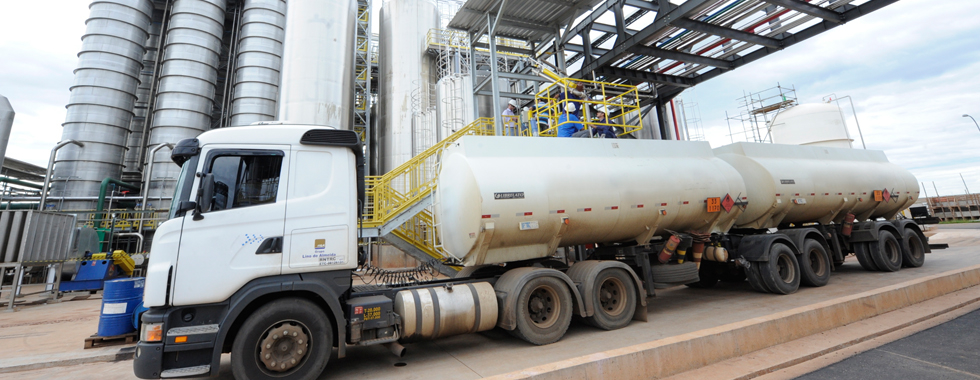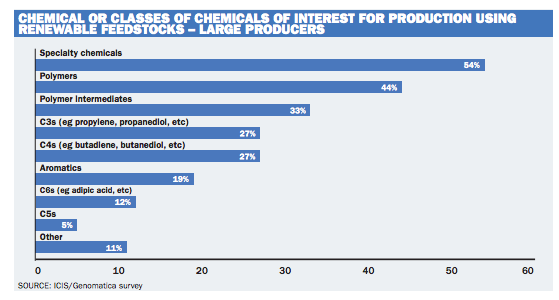The blog wishes our Asian readers a Happy Lunar New Year! Maybe the year of the snake would bring luck for renewable chemicals in 2013 after a couple of production milestone disappointments (according to investors) seen last year.
Within the past two months, the industry has already seen Reverdia (JV between DSM and Roquette) with the start-up of the world’s first large-scale bio-succinic acid plant in Cassano, Spinola, Italy, in December; Amyris announcing also in late December its successful production as well as shipment in January of its farnesene from the company’s Paraiso fermentation facility in Sao Paulo, Brazil; and today, Genomatica announced it was able to produced 2,000 tonnes of bio-based 1,4 butanediol (BDO) within five weeks at the DuPont Tate & Lyle’s biochemical plant in Loudon, Tennessee.
Let’s start first with Amyris. I was actually thinking of posting this news after getting more information from their earnings next week but I might as well put this out now given Genomatica’s announcement.
The blog previously mentioned that Amyris’ Paraiso plant is supposedly capable of producing 50m liters/year of farnesene (under the trademark Biofene) once it is in full commercial operation. Amyris expects to step up its commercial production level over a three-year period. The facility sources it sugarcane feedstock locally from the Paraiso mill.
Last month, Amyris said it has finally shipped its first truckload of Biofene from the Paraiso plant, which reportedly marked the successful completion of the plant’s start-up activities. Amyris said it was able to go through several production runs during the first month of operation without a hiccup or contamination in multiple fermentation tanks that were operated.
“We are now focused on ramping up Biofene production and delivering product to our customers, from renewable diesel for bus fleets in Brazil to squalane emollient globally and soon a range of specialty chemical applications.” – Amyris
 |
| Amyris’ first truckload of Biofene shipment from Brazil |
The blog believes the Paraiso facility has about 6 fermenters and Amyris has opened up two fermenters this year. Each fermenter is about 200,000 liters. The blog will monitor Amyris’ earnings conference call for any other updates on February 19.
By the way, I recently read this interesting article published last year in August by Fast Company about Amyris’ management shake-up last year and how Amyris’ CEO John Melo (then the president of BP’s fuel operations) finally learned how to deal with a biotechnology company (or he could still be in a learning mode…). This article could be a useful read to other management out there dealing with start-ups in renewable chemicals and advanced biofuel industries.
Meanwhile, Genomatica said it is the first company to successfully produce bio-based BDO in commercial-scale level at the DuPont Tate & Lyle plant. The company was able to produce more than five million pounds or over 2,000 tonnes of BDO by direct fermentation using conventional sugars as feedstock for five weeks since late 2012. Tate & Lyle has a corn wet milling operation beside the Loudon facility.
Genomatica said this marks the first time that BDO– with an existing worldwide market of billions of pounds per year – has been produced biologically on this scale and at this rate. This is an equivalent run-rate of over 52m lb/year (more than 23,000 tonnes/year).
“This was a sizable commercial-scale production campaign,” said Christophe Schilling, Genomatica’s CEO. “Partnering with DuPont Tate & Lyle brought us biochemical process know-how at significant scale to make the leap from demonstration to commercial volumes. The success of this campaign is a significant milestone for our technology and for the biochemical industry.”
The 2,000-tonne production was able able to fill over 100 trucks, which will probably be shipped to current and potential customers although Genomatica refused to comment on to whom these bio-BDO products will go to.
 |
| Over 2,000 tonnes of bio-BDO were produced, filling over 100 trucks, using Genomatica’s technology. |
The blog asked how much their bio-BDO costs using current feedstock price and operation expenses. Here is Genomatica’s answer:
“While we’re not quoting a specific number on this, we wanted to share a more complete picture re economics. We expect to deliver better overall economics for the production of BDO than petrochemical routes. Already today, the combination of our competitive cost position and an opportunity to gain access to advantaged technology has resulted in significant interest and companies taking action to buy product now such that all the product from our campaign has been purchased and delivered.
Our improved economics are tied to lower capex per pound of capacity; an ability to ‘right-size’ a plant and economically deploy modest-size plants in addition to larger ones; and competitive opex. We further expect our economics to continue to improve over time as we enable the use of potentially lower cost feedstocks, such as cellulosic biomass, and continue to improve our organism and overall process.”
Genomatica said it will focus on working with partners and will actively license their bio-BDO technology. The company has a joint venture with Italian bioplastic company Novamont, which recently purchased an amino acid facility in Adria, Italy. Novamont intends to convert the facility into producing bio-based BDO with a production capacity of 20,000 tonnes/year. Novamont expects to start production by the end of 2013 although Genomatica did not comment on any timeline for this facility.
Novamont is expected to finance the plant conversion and to operate it. The company has committed to purchasing all of the bio-BDO output from the plant while Genomatica may purchase a portion at its discretion to support further market development. Novamont will consume the BDO for its own internal use to meet increasing demand for its biopolymer products that incorporate BDO as a key monomer.
Genomatica is also still exploring a commercial bio-BDO production deal with Japan-based Mitsubishi Chemical, where negotiation seemed to have stretched for almost a year now. So far, no comment on that end as well.
Wrapping up this post is a recent sustainability survey carried out by Genomatica and ICIS in late 2012. Over 700 ICIS Chemical Business readers in various chemical sectors respond to the survey, which was a follow-up and extension of a research project done from mid-2000 on sustainability practices.
According to the survey’s results, majority of companies in the chemical industry have now incorporated sustainability into business practices and are looking to it as a way to not only reduce environmental impact but also to lower costs and meet customer requirements.
Most companies are also looking for drop-in or near drop-in bio-based alternatives to petroleum products in an attempt to minimize development time and costs associated with reformulation and re-equipping production facilities.
Key initiatives over the past five years has been to improve manufacturing processes, especially with respect to reducing energy and waste, which was mentioned by 75% of the respondents. Other leading initiatives include the reduction/elimination of toxic chemicals (mentioned by 47%) and increased use of bio-based and renewable content in products (44%).
Of the producers of commodities or intermediates, 45% said they are currently investing in R&D into renewable feedstocks and 36% have made a strategic commitment to use such feedstocks. Over half of respondents said their companies are investing in renewable-based production facilities and a further 26% are actively investing and planning.
When it comes to considering the shift to renewables, the important factors cited were availability of renewable feedstocks and the availability of technology. This was also the case in the 2009 survey, where alternative feedstock cost was also of high concern. Besides cost benefits, producers said that a major driver for their interest in renewables was the fact that their customers have expressed an interest in sustainably produced chemicals.
In terms of which products are grabbing the interest of this group of producers, specialty chemicals came out top, with 54%, followed by polymers (44%) and polymer intermediates (33%).
Other targets for production via renewable feedstocks are C3s (propylene and propanediol, etc, 27%) and C4s (butadiene and butanediol, etc, 27%). Also mentioned were aromatics and C6s, such as adipic acid. In terms of customer requests, packaging plastics came out highest, at 59% of enquiries to producers responding, followed by personal care products (45%), engineering plastics (41%) and fabrics and fibres (22%).
FOLLOW ME ON THESE SPACE
Discussion
Comments are closed.